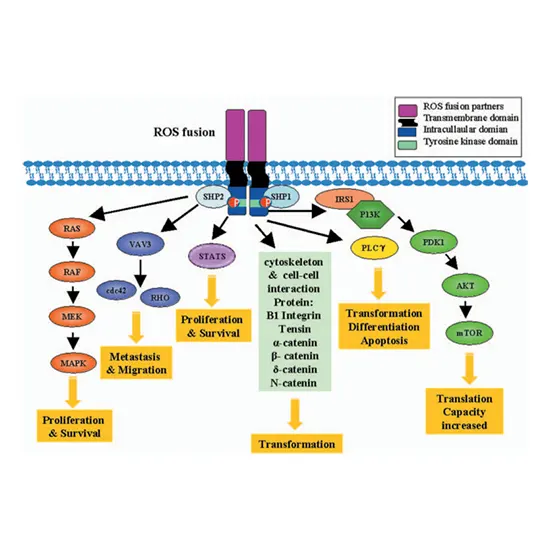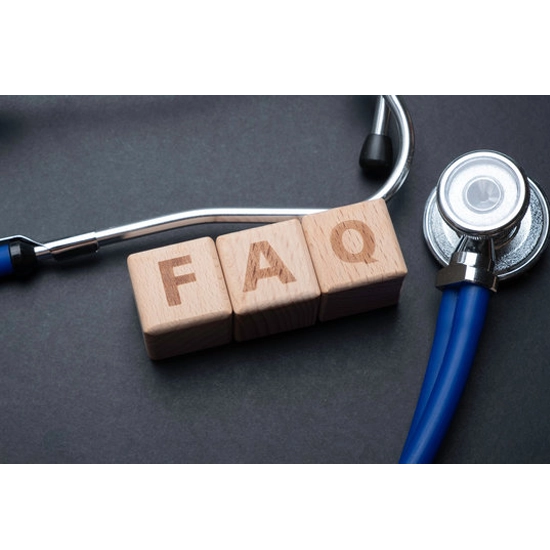
Book ALK and ROS1 Appointment Online Near me at the best price in Delhi/NCR from Ganesh Diagnostic. NABL & NABH Accredited Diagnostic centre and Pathology lab in Delhi offering a wide range of Radiology & Pathology tests. Get Free Ambulance & Free Home Sample collection. 24X7 Hour Open. Call Now at 011-47-444-444 to Book your ALK and ROS1 at 50% Discount.
The most frequent cause of cancer-related mortality in China has been lung cancer. When non-small compartment lung cancer patients are originally analyzed, the preponderance have already moved to progressed phases. Throughout the past three decades, chemotherapy has been a mainstay therapy with patchy results. When compared to chemotherapy alone, molecular target-based treatment methods for NSCLC have shown positive results.
Tyrosine kinase inhibitors of the EGFR are presently indicated as a first-line antidote for patients with metastatic EGFR-sensitizing modifications. The designation of EGFR modifications has also repeatedly been instructed. According to earlier research, the rates of ALK and ROS1 in NSCLC were respectively 3-7% and 1-2%.
Due to the fact that only 200 individuals have been recorded, despite being a widespread detecting modality, the clinicopathological features are not well understood, particularly for ROS1 rearrangement. Nonetheless, the majority of earlier investigations have mainly concentrated on the correlation between clinical traits and gene frequency. Nevertheless, histological subtypes and immunohistochemistry (IHC) markers were not completely explored. Moreover, a number of recent investigations have demonstrated that driver genes may exist concurrently. Yet the majority of them concentrated on EGFR concomitancy. Furthermore, little is known about how frequently ALK and ROS1 coexist.
The two vastly frequent fusion marks in lung adenocarcinoma are ALK and ROS1 rearrangements. ALK/ROS1-rearranged lung adenocarcinoma patients without EGFR mutation were the focus of our investigation, which aimed to better understand their clinicopathological traits, cohabitation, and management.
Four domestic hospitals conducted ALK/ROS1 screenings on patients with wild-type EGFR mutations. RT-PCR was utilized to discover ALK/ROS1 rearrangements . The Kaplan-Meier method was used to plot the PFS curve, or progression-free survival.
ALK and ROS1 rearrangements were found in 89 (12.2%) and 32 (4.4%) patients, respectively, out of 732 qualified cases. One patient had an ALK/ROS1 fusion that coexisted. The majority of ALK and ROS1 positive phenotypes were found in younger non-smokers. There was a correlation between the expression of TTF1, napsin A, and the solid majority adenocarcinoma subtype with the number of ALK/ROS1-rearranged patients. Patients with ROS1 rearrangement and 33 patients with ALK underwent advanced crizotinib therapy. Those who tested positive for ALK had a median PFS of 9.5 months, whereas their ROS1-rearranged counterparts did not.
In EGFR-wild-type patients, the prevalence of ALK and ROS1 rearrangements is increased, and the phenomena of coexisting ALK/ROS1 has remained incredibly rare. Age, smoking status, expressions of TTF1 and napsin A, and the solid majority adenocarcinoma subtype are all associated with the rearrangements of ALK/ROS1.
| Test Type | ALK and ROS1 |
| Includes | ALK and ROS1 (Oncology) |
| Preparation | |
| Reporting | Within 24 hours* |
| Test Price |
₹ 15000
|

Early check ups are always better than delayed ones. Safety, precaution & care is depicted from the several health checkups. Here, we present simple & comprehensive health packages for any kind of testing to ensure the early prescribed treatment to safeguard your health.